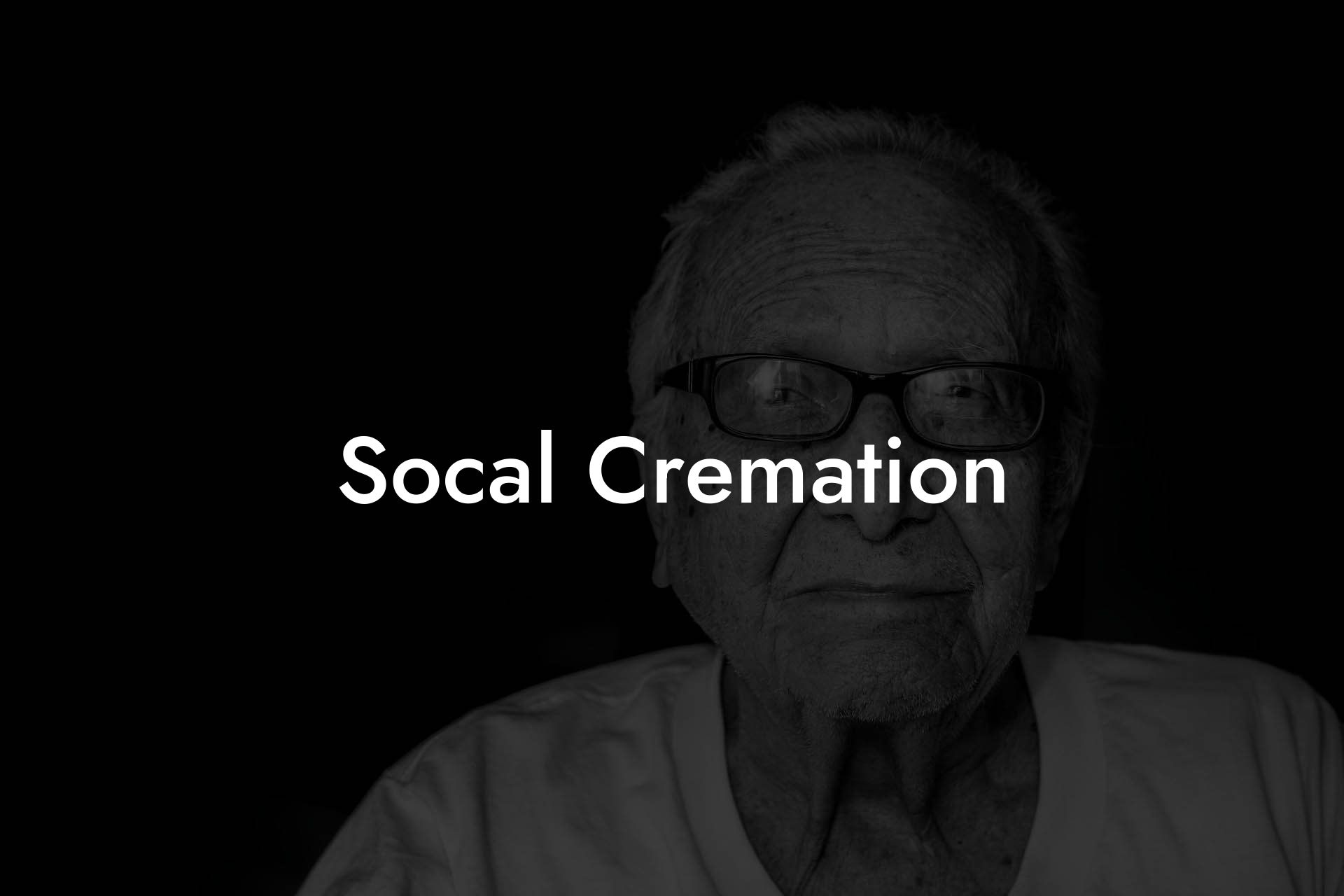Imagine a world where saying goodbye to a loved one is not only a celebration of their life but also a chance to reconnect with nature and reduce your carbon footprint. Welcome to the world of SoCal cremation, a modern, eco-friendly, and compassionate approach to honoring the deceased. Whether you're planning ahead or facing a difficult loss, this comprehensive guide will walk you through the benefits, process, and options of cremation in Southern California.
Quick Links to Useful Sections
- What is Cremation, and Why is it Popular in SoCal?
- The Cremation Process: A Step-by-Step Guide
- Cremation Options: From Traditional to Modern
- Cremation Costs: Understanding the Expenses
- SoCal Cremation Laws and Regulations
- Frequently Asked Questions About SoCal Cremation
- Resources and Community Support: Your Next Steps
What is Cremation, and Why is it Popular in SoCal?
Cremation is a dignified and environmentally conscious alternative to traditional burial. It involves the use of high-temperature flames to reduce the body to its basic elements, leaving behind a small amount of ashes, also known as cremated remains. In Southern California, cremation has become increasingly popular due to its eco-friendliness, cost-effectiveness, and flexibility in memorialization options.
SoCal's cremation rates are among the highest in the country, with over 70% of families choosing cremation over traditional burial. This shift is largely driven by the region's environmentally conscious population, as well as the desire for a more personalized and affordable way to say goodbye.
The Cremation Process: A Step-by-Step Guide
Understanding the cremation process can help alleviate any concerns or uncertainties you may have. Here's a step-by-step overview of what to expect:
- Authorization: The legal next of kin or authorized representative signs a cremation authorization form, giving permission for the cremation to take place.
- Preparation: The body is prepared for cremation, which may include washing, dressing, and cosmetizing.
- Cremation Chamber: The body is placed in a cremation chamber, where it is exposed to high temperatures (typically between 1400°F and 1800°F) for 1-2 hours.
- Cooling and Processing: The remains are cooled and processed into a fine powder, known as cremated remains or ashes.
- Return of Ashes: The cremated remains are returned to the family in an urn or container, ready for memorialization or scattering.
Cremation Options: From Traditional to Modern
SoCal cremation offers a range of options to suit every family's needs and preferences. Here are some of the most popular choices:
- Traditional Cremation: A traditional funeral service followed by cremation, often with a viewing or visitation.
- Direct Cremation: A simple, low-cost option where the body is cremated shortly after passing, without a funeral service.
- Green Cremation: An eco-friendly alternative that uses a water-based cremation process, reducing environmental impact.
- A family-led funeral where the body is cared for and prepared at home, often with a DIY approach.
- Sea Burial: A unique option where the cremated remains are scattered at sea, often with a ceremony or memorial service.
Cremation Costs: Understanding the Expenses
The cost of cremation in SoCal can vary depending on the type of service, location, and provider. Here are some estimated costs to expect:
- Direct Cremation: $1,000 - $2,000
- Traditional Cremation: $2,000 - $5,000
- Green Cremation: $1,500 - $3,000
- Sea Burial: $2,000 - $5,000
Keep in mind that these estimates may not include additional costs such as urns, memorials, or funeral services.
SoCal Cremation Laws and Regulations
Understanding the laws and regulations surrounding cremation in SoCal can help you navigate the process with confidence. Here are some key points to know:
- Authorization: Only the legal next of kin or authorized representative can authorize a cremation.
- Permits: A cremation permit is required, which involves a medical examiner's report and a death certificate.
- Cremation Chamber: Cremation chambers must meet specific environmental and health standards.
- Scattering: Scattering cremated remains is allowed in designated areas, but may require a permit or permission from local authorities.
Frequently Asked Questions About SoCal Cremation
Here are some common questions and answers about cremation in SoCal:
1. Is cremation environmentally friendly?
Yes, cremation is generally considered an eco-friendly option, as it reduces the land use and resources required for traditional burial.
2. Can I still have a funeral service with cremation?
Yes, many families choose to hold a funeral service or memorialization ceremony before or after the cremation process.
3. What happens to the ashes after cremation?
The ashes can be returned to the family, scattered in a designated area, or buried in a cemetery or memorial garden.
4. Is cremation a popular choice in SoCal?
Yes, SoCal has one of the highest cremation rates in the country, with over 70% of families choosing cremation over traditional burial.
Resources and Community Support: Your Next Steps
Losing a loved one can be a difficult and overwhelming experience. Here are some resources and community support options to help you navigate the grieving process:
- Cremation Associations: Organizations like the International Cemetery, Cremation and Funeral Association (ICCFA) and the National Funeral Directors Association (NFDA) provide guidance and resources on cremation.
- Grief Support Groups: Local support groups, online forums, and counseling services can offer a safe space to share your emotions and connect with others who have experienced a similar loss.
- Memorialization Options: Consider creating a memorial or tribute to your loved one, such as a tree planting, memorial garden, or online memorial.

